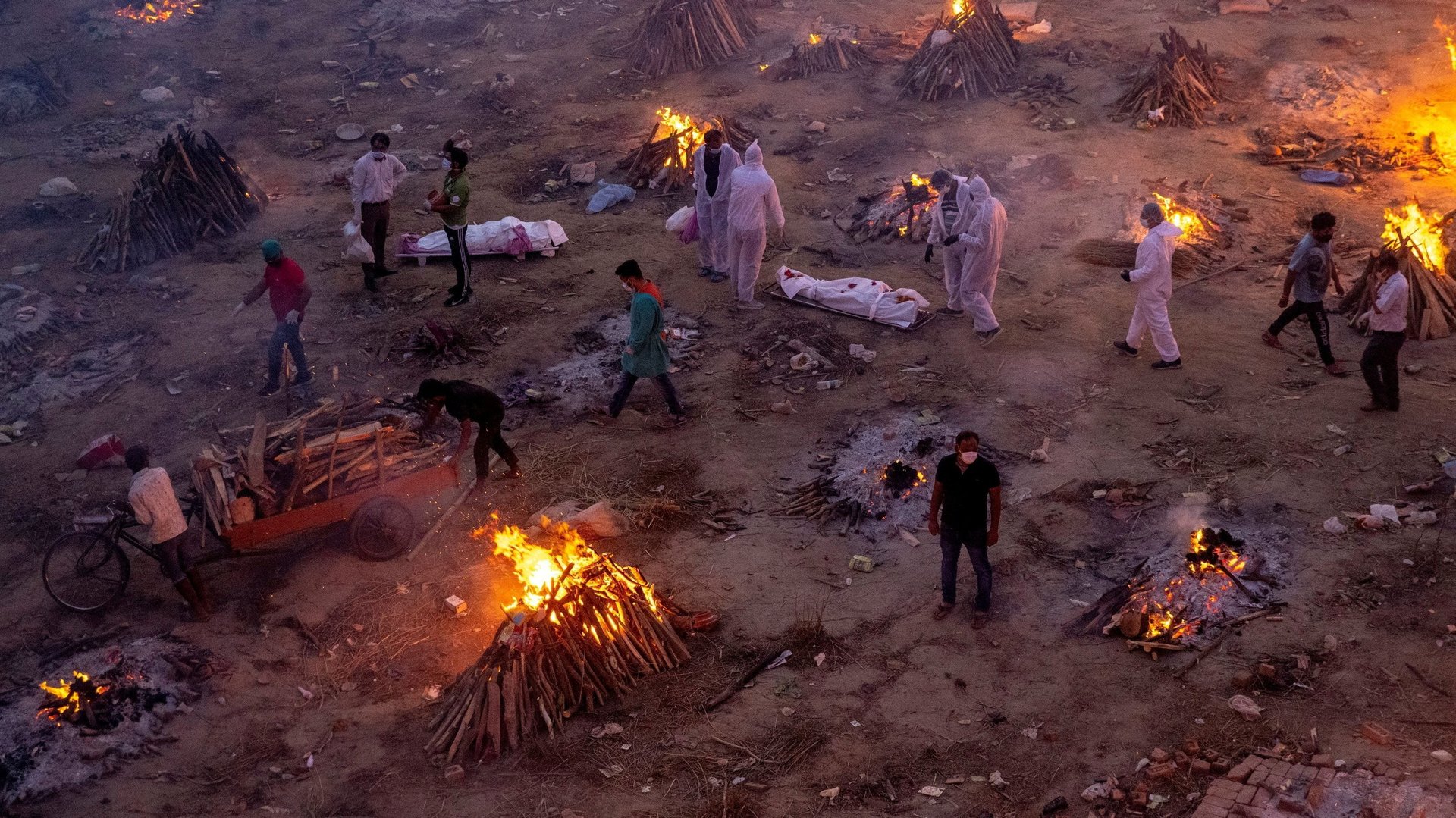A year on, we still don’t know the real impact of India’s second covid wave
India lost a large number of people to the covid-19 pandemic. Just how large depends on what estimate one reads.


India lost a large number of people to the covid-19 pandemic. Just how large depends on what estimate one reads.
And those estimates, such as the Indian ministry of health’s or the World Health Organization’s (WHO), can differ from each other by a couple of millions. Its government is now allegedly resisting the global health body’s model for excess mortality, which pegs the toll at 4 million as against the official 520,000, according to a report in the development sector media platform Devex.
In any case, the WHO isn’t the first to point out the vast discrepancy.
Various covid-19 death estimates for India
A study conducted by researchers in India, Canada, and the US in July 2021 found that India’s death toll could be as high as 3.4 million. This study, like the one by the WHO, also used all-cause excess mortality data from official state records and investigative news reports.
Similarly, a Lancet report in March said India had the world’s highest covid-19 mortality, roughly at about 200 per 100,000 people. This, too, was dubbed by India as “misinformed.”
The quality of India’s mortality data generally has worried epidemiologists, especially since the second wave.
“…a large number of deaths (especially ones happening outside a healthcare facility or in rural areas) routinely remain medically unreported,” researchers, including noted epidemiologists Giridhara R Babu and Bhramar Mukherjee, wrote in the American Journal of Public Health on July 27, 2021.
This also highlights the government’s efforts to downplay the total collapse and chaos during the second wave of covid-19 in April-May 2021.
Why it’s hard to estimate deaths in India
During the second wave, Indians found it hard to schedule tests to confirm their diagnosis. Labs were completely overwhelmed and hospitals were on the brink of collapse. Thousands were left with no choice except for home treatment. Several such people died simply waiting for medical oxygen.
In the pandemic’s chaos, only deaths officially attributed to covid-19 made it to government records. Even in normal times, estimating fatalities is difficult in India, digital innovations notwithstanding.
For these reasons, Jon Wakefield, a researcher on the WHO’s excess mortality project, has said that the global model used for countries like the US and UK was not used for India. In countries with no official all-cause mortality data, the basis for calculating excess mortality during the pandemic years, researchers have used mortality data from sub-regions. In India, this would mean states and union territories.
“The information was either reported directly by the states through official reports and automatic vital registration, or by journalists who obtained death registration information through right to information requests,” Wakefield said.
Journalists and researchers sought other means using the number of burials and cremations, reaching conclusions vastly different from those indicated by the government’s numbers. The deviation of the actual fatalities during the pandemic years from the projections based on civil registration trends between 2015 and 2019 also offered key clues.